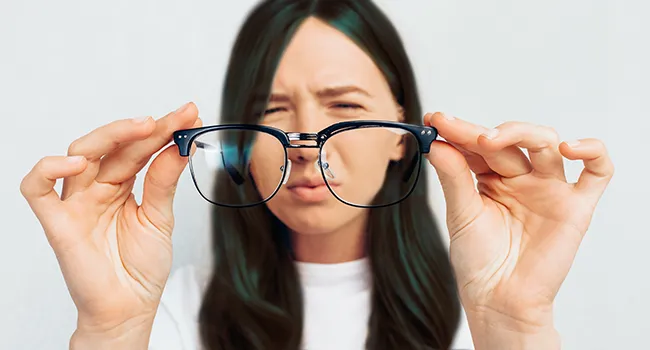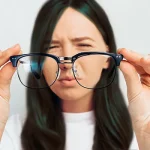We all know that low vision is a loss of eyesight that lenses, surgery, or glasses cannot improve. Also, the remaining limited sight means it is not blindness. Blind spots, poor night vision, and hazy vision are examples of low vision. Age-related macular degeneration, glaucoma, and diabetes are the most frequent causes.
If you’re looking forward to knowing the types of low vision, then you’re in the right place. Keep reading everything about Low Vision treatment here.
How To Define Low Vision?
Low vision is the loss of eyesight that cannot be restored with surgery, contact lenses, or prescription glasses. There is still some vision, and it can occasionally be enhanced with the use of visual aids. Therefore this form of vision loss does not involve total blindness. Low vision encompasses various degrees of visual loss, from blind spots, poor night vision, glare issues to an almost complete loss of sight.
Types Of Low Vision
Your disease or condition that produced your low vision will determine the type of low vision you have. Now we will talk about the different types of low vision. Low vision is most frequently caused by:
loss of central vision
Loss of central vision, referred known as central vision loss, can occur suddenly or gradually. It entails the loss of vision details and the appearance of one or more black or fuzzy areas in the field of vision. Over time, these patches could enlarge or develop more.
Loss of peripheral vision (not being able to see from the corners of your eyes).
Even when the central vision is perfect, peripheral vision loss refers to losing the wide-angle field of vision. We can observe objects out of the corner of our eyes thanks to peripheral vision. As a result, we are able to observe things without turning or moving our heads.
Darkness blindness (not being able to see in low light).
Nyctalopia is another name for a vision impairment known as night blindness. People with night blindness have impaired nighttime or low-light vision. The phrase “night blindness” implies that you cannot see at night, although this is untrue. You might have more trouble seeing or operating a vehicle in the dark.
Foggy or blurry vision.
You have blurry vision when an object appears to be out of focus. You might think that squinting will help the situation by making the object more visible. One of the best instances of fuzzy vision is how an image appears on a camera before you adjust the lens or allow it some time to focus on the topic. One of the symptoms is the poor peripheral or left or right field of vision.
Who Can Have Low Vision?
Low vision can be caused by various diseases and traumas, making it a problem for everyone. Low vision is common in individuals over the age of 45 and even more prevalent in adults over the age of 75 as a result of age-related diseases such as macular degeneration and glaucoma. For instance, one in four persons over 75 and one in six adults over 45 have impaired eyesight.
Low vision may have one or several reasons. These are typically the result of eye conditions, eye injuries, or conditions that impact the entire body, such as diabetes. Low vision can also be caused by glaucoma, age-related macular degeneration, and genetic eye disorders such as retinitis pigmentosa, albinism, brain damage, etc.
How To Diagnose Low Vision?
Low vision can be identified through an eye exam by an eye care professional. If vision problems keep you from performing usual tasks like travelling, cooking, working, or attending school, you should schedule an appointment with an eye doctor. In order to assess visual acuity, depth perception, and visual field, the eye doctor will utilize illumination, magnifiers, and special charts.
Treatment For Low Vision
Sadly, types of blindness and low vision are frequently irreversible. Although eyeglasses, medications, and surgery typically cannot cure low vision, they can occasionally help you see better, carry out daily tasks more easily, or prevent your eyesight from deteriorating.
There are a few low vision aids that can help people with low vision issues. Some of them are:
– Magnifying Spectacles: These devices are worn similar to eye glasses and are good for tasks like reading, etc. One can zoom in manually to adjust the vision.
– Standing Magnifiers: These devices are kept on an object that you are trying to see or read. These magnify the images for better vision. Hand-held magnifiers can also be used.
– Digital Magnifiers: These hand held electronic devices make the images look bigger in size. Mobile phones or tablets can be used as digital magnifiers.
Why CFS
Centre for Sight was founded with the goal of providing the highest quality comprehensive eye treatment with a personal touch. Centre sight has an low vision aid clinic at Dwarka eye institute due to which it has steadily established itself as one of the best eye hospitals in India, with a staff of highly competent and experienced doctors with extensive expertise who are well-equipped with cutting-edge surgical and diagnostic technologies to provide successful treatment. Not just that, we also provide our patients with various types of low vision devices. Know more about such eye related topics with Centre for Sight.
Article: Different Types Of Low Vision You Should Know!
Author: CFS Editorial Team | July 28 2022 | UPDATED 02:00 IST
*The views expressed here are solely those of the author in his private capacity and do not in any way represent the views of Centre for Sight.





